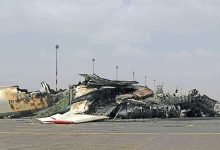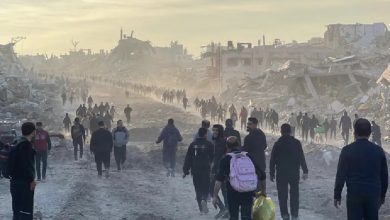Yemen Shelling Unleashes Regional Turmoil: David Hearst’s Stark Warning of an Imminent Catastrophe

Watan-The renowned British journalist David Hearst affirmed in an article on the “Middle East Eye” website, of which he is the editor-in-chief, that the Israeli occupation did not achieve its objectives in destroying the Islamic resistance movement Hamas or reshaping the Middle East, questioning what would happen next.
As the Israeli onslaught on Gaza approaches its 100th day, and with reports indicating that the war will “move” into a new phase, there are warnings of an impending regional catastrophe and a possible broader war in the volatile region, according to Hearst.
Regardless of the decision that the International Court of Justice in The Hague will make regarding South Africa’s claim that Israel is responsible for genocide, it is certain that Israel has created a humanitarian catastrophe in Gaza – a deliberate act. Even if the war were to cease tomorrow, Gaza has become a breeding ground for disease. The World Health Organization has reported that, on average, “every 220 people in Gaza share one bathroom, and in UNRWA shelters, there is one shower unit for every 4,500 people.”
In addition to being the end of Netanyahu, the Israeli war will also mark the end for U.S. President Joe Biden, who has been involved in deadly attacks in Yemen. A unprecedented bombing campaign has begun, which could escalate the region into a regional war described by David Hearst as a disaster.
On Thursday, U.S. and British warplanes bombed Houthi positions in Yemen, a strike that the Houthis will be able to endure after surviving seven years of Saudi Arabian airstrikes, according to David Hearst’s article.
This will be followed by a new war in the Red Sea. This is the result of a week of U.S. diplomacy attempting to prevent the outbreak of a regional war.
In Iraq, after U.S. airstrikes targeted a leader of the second line in the Popular Mobilization Forces, an armed faction under the umbrella of the Popular Mobilization Units in Iraq, Prime Minister Mustafa Al-Kadhimi immediately announced that his government would close all U.S. military bases in Iraq – a major goal for Iran since the killing of Soleimani.
David Hearst stated that what he called the “war of attrition on Israel’s borders” has become palpable. This leaves the United States and Britain, the two powers bearing the greatest responsibility for the massacre in Gaza, with few cards to play, and time is running out quickly.
The British writer also said, “These hundred days seem like the first shots of a much longer and larger war, which will be disastrous for everyone – Jews and Arabs alike.”
The Israeli army announced that more than 103 soldiers were injured in the fighting in the past 24 hours. A day later, the occupation army declared the death of nine soldiers. During the same period, the Ministry of Health in Gaza announced that 126 Palestinians were killed in Israeli attacks.
The Palestinian Ministry stated that 147 others were killed in Gaza in the past few hours. Hearst noted that the daily losses suffered by the Israeli occupation and Palestinian civilians in Gaza contradict claims of a “less intense” new war.
The British writer explained in his article that these numbers clearly reflect that human losses persist, and after 100 days, a war is ongoing that is no less fierce than in the past, and Hamas is determined to continue resistance and not surrender.
He continued that after 100 days of the most intense aerial bombardment witnessed globally since the Allies bombed Dresden, Hamburg, and Tokyo in World War II, Hamas has retained its ability to fight and inflict losses on Israeli tanks and soldiers.
There is now some sensitivity in Israel regarding the extent of the losses it is enduring. After continuous reports of an increasing number of injured soldiers, Hearst says.
After the killing of Al-Aarouri, Hezbollah Secretary-General Hassan Nasrallah pledged retaliation in a speech on the fourth anniversary of the death of the Iranian General Qasem Soleimani. However, he maintained his main message regarding Hezbollah’s red lines.
In response to Al-Aarouri’s killing, Hezbollah struck the Israeli airbase on Mount Meron in the north with 62 rockets and launched a drone attack on Israel’s northern command. These are high-value military targets, as if Hezbollah is sending its own response to Israel regarding the precision and complexity of the party’s military range.





